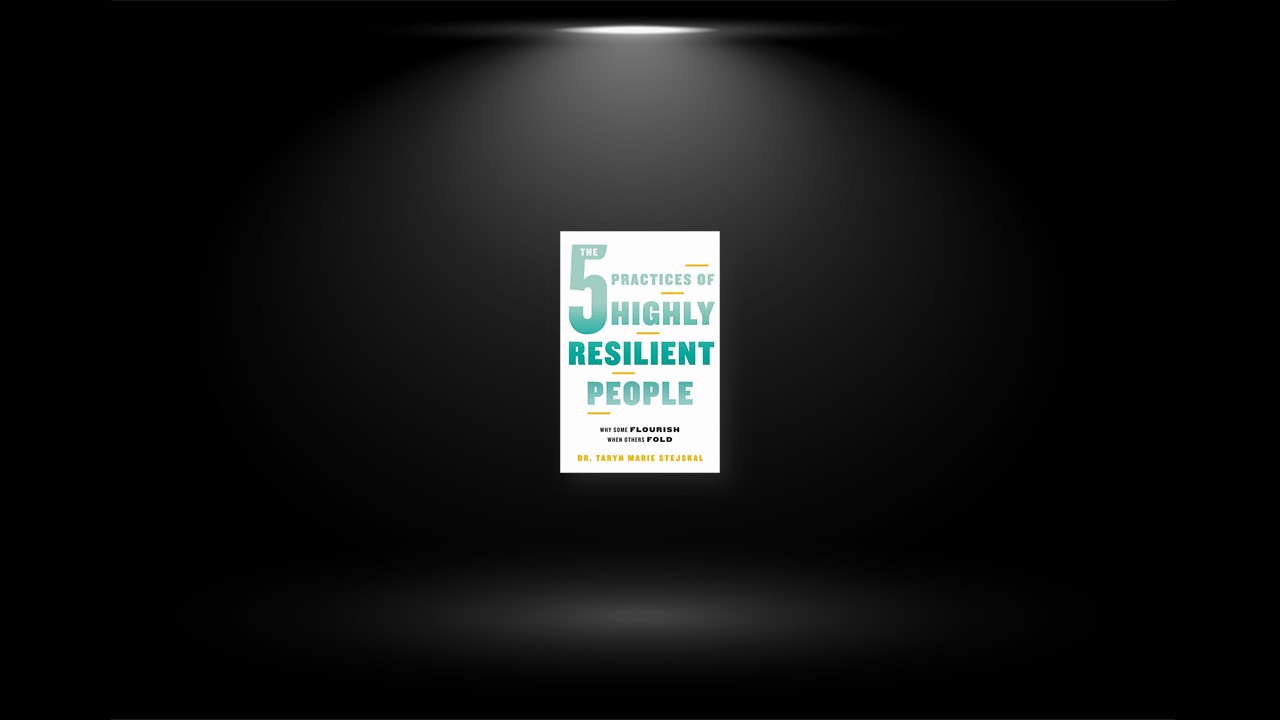The Practice of Vulnerability
How would you complete the following sentence? “People would think I was crazy if they knew…”
Your answer is your resilience story. Resilience stories are the stories we often don’t want to tell, but most need to be told. Everyone has at least one resilience story. When you have the courage to share your resilience story, three powerful things occur: • You deepen your own resilience and others learn from your experience. • You face your fear of being vulnerable and role model vulnerability for others. • You encourage others to demonstrate vulnerability and create a climate where vulnerability is accepted and encouraged.
Resilient Vulnerability is the ability to navigate the paradox of both possessing personal strength and being open to sharing our challenges. While the polarity of these two elements might sound impossible to reconcile, The Practice of Vulnerability is a foundational practice of resilience. If you’re like many people, you were brought up to think that resilience is about toughness. However, the people who are most resilient allow themselves to be softened by their experiences, not hardened.
To be vulnerable is to allow your “inside self” (your internal thoughts, feelings, and experiences) to match your “outside self” (the person you show to the world). This mirroring of the inside and outside self is called congruence. Vulnerability, then, is the lifelong practice of allowing our inside and outside selves to be in harmony with one another as much as possible.
Vulnerability is a key element in resilience because the more congruent we are as people, the more we can function in moments of challenge without burning up a lot of energy to navigate and manage two separate personas—the inside and outside selves. The most resilient people share their experiences, challenges, changes, and complexities with the people in their lives who support them in these tender moments.
The Practice of Productive Perseverance
The Practice of Productive Perseverance is what we do when the grit hits the fan. At its core, it boils down to this question: “Do I stay, or do I go? Do I persevere, or do I pivot?” This is the resilient practice that supports you in your intelligent pursuit of a goal, knowing when to stay the course, when a setback is a setup for your next big success, and when, in the face of diminishing returns, you adjust and pivot in a new direction.
When facing any trial, we often receive conflicting advice: stay the course versus shift gears. The Practice of Productive Perseverance is the intelligent pursuit of a goal. It requires the ability to know when to maintain the mission, and when, in the face of diminishing returns, to make a pivot, small or large, in a new direction.
Being able to pursue goals intelligently is the hallmark of this practice. Productive Perseverance is about pursuing a goal even when you don’t know if you’ll “make it,” and doing your best to navigate the complexities of your journey. We’ve all seen people rise above ridiculous obstacles and achieve a lofty goal in the face of naysayers and few, if any, believers. We’ve also seen those who chase an unachievable goal too long with diminishing returns. The Practice of Productive Perseverance is about the art and science of knowing the difference.
Despite the advice to never quit, The Practice of Productive Perseverance tells you that giving up, or at least making a pivot, small or large in a new direction, is now a hallmark of resilience and the ability to effectively pursue your goals, not a sign of weakness. Gone are the days when simply putting your head down and charging toward a goal no matter what obstacles emerge is a sign of resilience. These days, our lives are defined by flux, disruption, and ambiguity, making it even more important that we take stock of our conditions before engaging dogged determination to arrive at the outcome we hope to achieve, no matter what.
The Practice of Connection
The Practice of Connection is the connection we have with ourselves, internally, as well as the connection we create with others, externally. Internally, connection is the willingness to know ourselves deeply, listening to ourselves and cultivating our voice, knowing our value, and trusting ourselves.
Externally, our natural tendency is to reach out to others and build or maintain a supportive community that includes the connections we have with our friends, families, places of work, and neighborhoods. Oftentimes, communities are created for various points in life, especially when we are facing a challenge and we find a community that is specifically equipped to provide support.
Internal connection is about knowing ourselves, listening to ourselves, learning to trust our gut and intuition, and knowing our value and inherent worthiness. The Practice of Connection is focused on creating and deepening the connection with ourselves, including developing our intuitive abilities to listen to our inner voice. How we connect within ourselves determines our ability to connect with the outside world.
Consider, for a moment, the wisdom of the human body. When the heart cleans and oxygenates our body’s blood, what organ does it pump this fresh blood to first? Itself. The heart gives itself the nourishment of the clean and oxygenated blood first because without the heart, our body cannot survive. Similarly, The Practice of Connection is concentrated, first, on our internal connection with ourselves, since it is the lifeblood that drives and nurtures all interactions outside of ourselves.
The Practice of Grati-osity
The Practice of Grati-osity is a hybrid word that combines the words gratitude and generosity. Expressing generosity to enhance your resilience is created by leaning on The Practice of Vulnerability and being willing to share your resilience stories instead of remaining silent. By sharing your resilience stories with others, you encourage others to take strength in their own success over adversity.
You can gain wisdom even in times of tragedy, hurt, and loss. Rather than withdrawing in those times, resilient people allow adversity to amplify their experience through gratitude and generosity. I’m not suggesting that you be grateful for feeling grief or sorrow. Instead, this is about honoring the capacity for healing and growth that springs even from suffering.
Life’s blessings are often well disguised. You might have to wait some time before understanding the benefit of the most challenging experiences. I’ve seen this with clients whose position was eliminated after years in one job. They will often feel hurt and insecure and angry after being fired. Yet, over time, many of them go on to even greater success in new jobs and they end up being grateful for the opportunity that was created when they were let go.
There is a strong positive correlation between gratitude, resilience, and feelings of happiness. Gratitude not only makes us feel great, but it also inoculates us against negative emotions. Our brain is wired in such a way that we can’t feel afraid or angry and feel grateful at the same time.
Feelings of gratitude block other negative emotions in our limbic system, enhancing our overall mind-set, mental health, and well-being when we practice gratitude. Gratitude fosters adaptive coping mechanisms, triggering positive emotions like satisfaction, happiness, and pleasure, enhancing our emotional resilience. It also is good for our well-being and mental health, and builds our ability to manage stress.
The Practice of Possibility
Resilient people who engage with The Practice of Possibility are better able to recognize that the never-ending quest for perfection doesn’t equate to excellence, often incapacitating us with unattainable standards, and to instead focus on progress. The Practice of Possibility is key during times of stress because, by nature, stress makes us more myopic.
However, by considering unique and novel ways to achieve a goal, you expand the array of options for creating results, and you leverage creativity to make your goals a reality. You also can more accurately appraise risks and opportunities.
The Practice of Possibility is, first, about focusing on progress instead of perfection, recognizing that the quest for perfection often paralyzes us with impossibly high standards. Second, The Practice of Possibility teaches us that to effectively navigate challenge, we get to examine the associated risks and opportunities inherent in every possibility. Those who flourish, rather than fold, become adept at creative problem-solving and finding solutions, even to seemingly intractable problems.
The Practice of Possibility, then, is about finding creative and innovative solutions, even in the face of fear and potential failure. The world craves your presence, not your perfection. The deceptive aspect of perfection is that it is unattainable. It will always elude you and you will have nothing to show for it, no matter how long you chase it.
Focusing on progress is much more fulfilling, not to mention attainable. There is a strong relationship between perfectionism and the detrimental impacts of procrastination. When you try to be perfect, you feel pressured, and you may tend to put off doing what you need to do to make progress.


